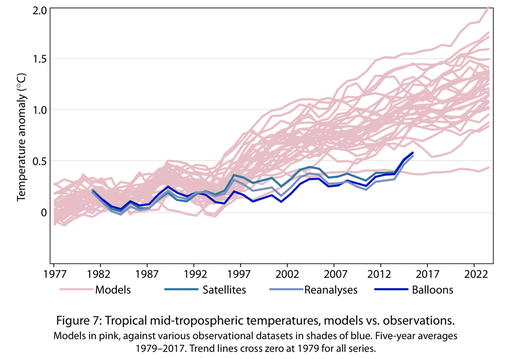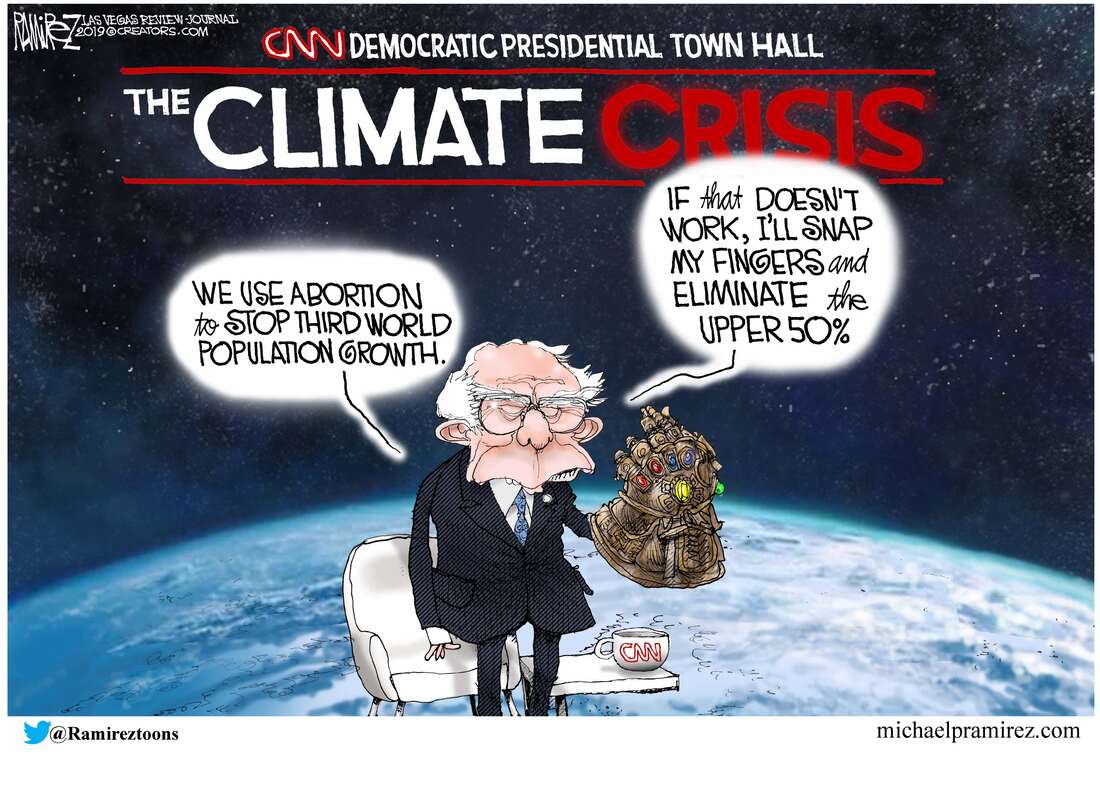|
|
|
Welcome to the official home and wonderful world of Pulitzer Prize Winning Political Cartoonist Michael P. Ramirez, daily editorial cartoonist for the Las Vegas Review Journal |
|
Bernie Sanders' Thanos complex

SEPTEMBER 6, 2019 BY JOHN HINDERAKER POWERLINE
WHERE’S THE HOT SPOT? This paper by John Christy, director of the Earth System Science Center and Distinguished Professor of Atmospheric Science at the University of Alabama in Huntsville, and the Alabama State Climatologist, is highly interesting. Christy describes work that he and Dick McNider have done to check the accuracy of the climate models that are the source of frenzy over global warming. His technical analysis is clear and comprehensible, but for now I will merely quote the conclusion of that part of the paper. Note that warming that is caused by additional CO2 (or other greenhouse gases) occurs in the atmosphere, not at the Earth’s surface: The warming trend we found suggests we are having a relatively minor impact on global temperatures. From the IPCC, we know what the forcing was over that 37.5 years – how many extra greenhouse gas molecules there were and what forcing they would represent. We also know about the effect of aerosols. Taking all this data together, we can calculate what I call – and we were the first to use this term – the ‘tropospheric transient climate response’. In other words: how much temperature actually changes due to extra greenhouse gas forcing. The calculation includes a major assumption, namely that there are no natural variations left in the temperature data, and in particular that there are no long-term natural variations. It’s a huge assumption, but it allows us to move on. Our result is that the transient climate response2 – the short-term warming – in the troposphere is 1.1◦C at the point in time when carbon dioxide levels double. This is not a very alarming number. If we perform the same calculation on the climate models, you get a figure of 2.31◦C, which is significantly different. The models’ response to carbon dioxide is twice what we see in the real world. So the evidence indicates the consensus range for climate sensitivity is incorrect. Another approach involves a method that Christy and Ross McKitrick used. The climate models predict a “hot spot” at about 30,000 to 40,000 feet in the tropics. This “hot spot” has been called the “signature” of man-made global warming, and early alarmists said that we watch for it over time. That is what Christy and McKitrick have done: Figure 7 shows the model projections in pink and different observational datasets in shades of blue. You can also easily see the difference in warming rates: the models are warming too fast. The exception is the Russian model, which has much lower sensitivity to carbon dioxide, and therefore gives projections for the end of the century that are far from alarming. The rest of them are already falsified, and their predictions for 2100 can’t be trusted. If an engineer built an aeroplane and said it could fly 600 miles and the thing ran out of fuel at 200 and crashed, he wouldn’t say ‘Hey, I was only off by a factor of three’. We don’t do that in engineering and real science. A factor of three is huge in the energy balance system. Yet that’s what we see in the climate models. A model is a theory, a hypothesis. A model that is falsified by observation is a wrong hypothesis. That really is all there is to it. read more |
The Dave Sussman Show
|




